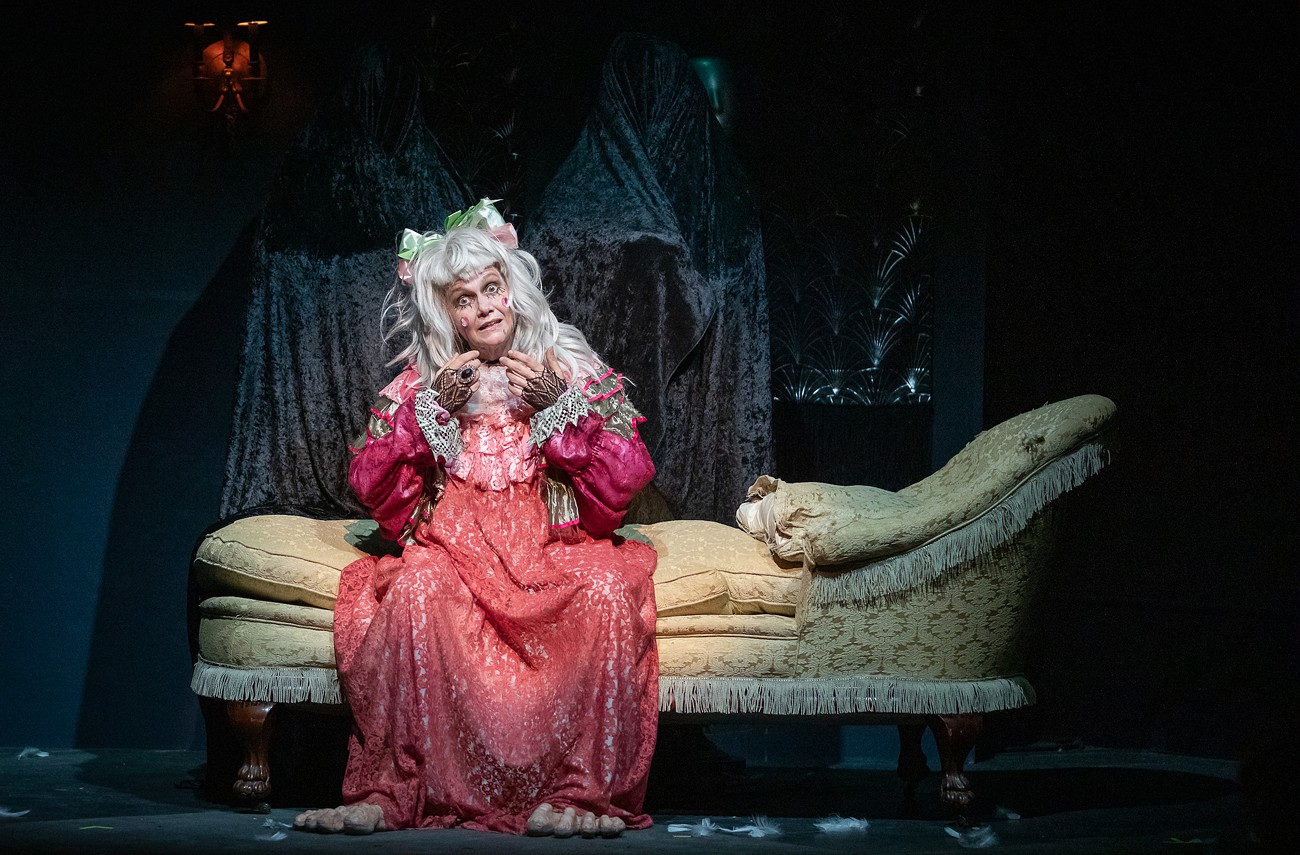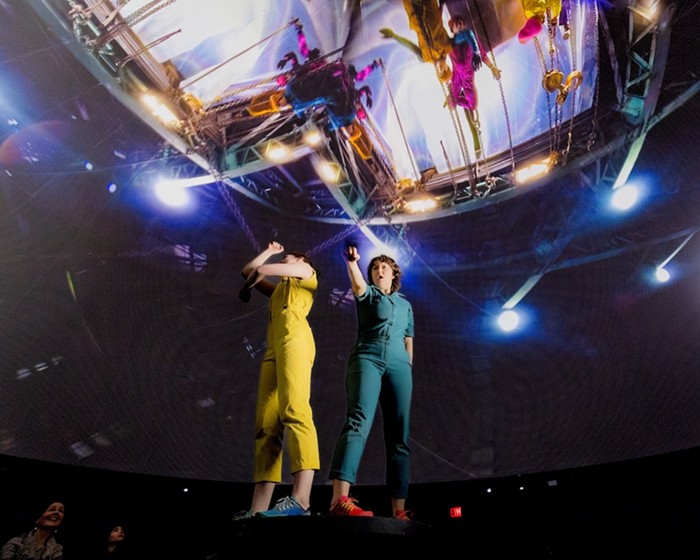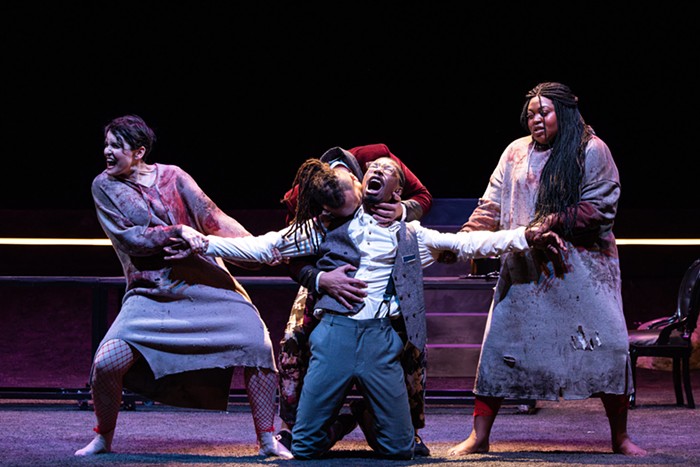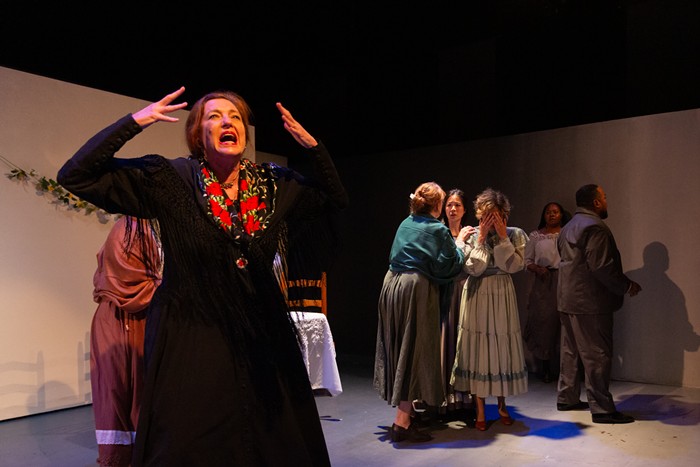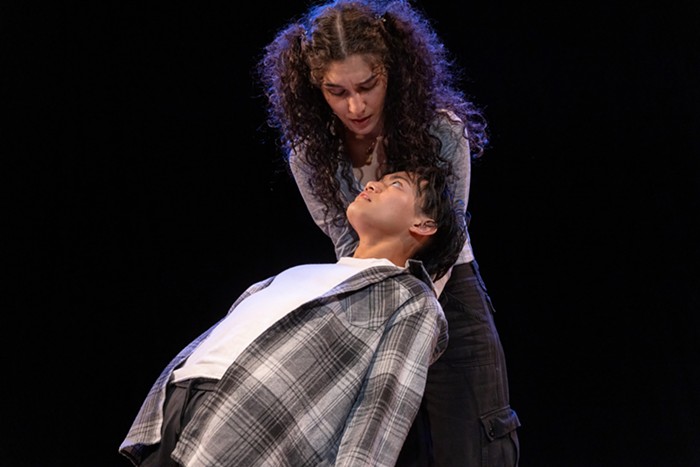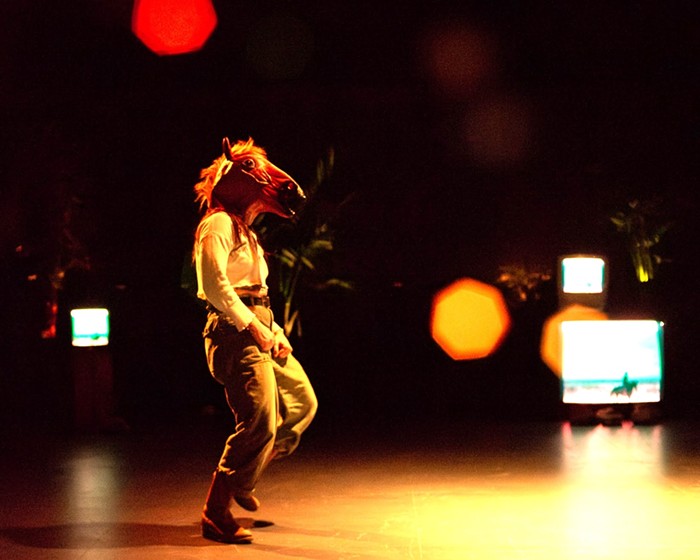Entering Portland Experimental Theatre Ensemble (PETE)'s latest show, Cardiac Organ: A Goth Cabaret, felt like descending into an underworld. The cavernous 10,000-square-foot mainspace of Portland Institute for Contemporary Arts (PICA) was filled with smoke and dimly illuminated by hanging strings of red LED lights. Other attendees were almost all dressed in black, and we walked towards a neon light heart over a door.
PETE always shows strong attention to visual design, and the transformation of a simple walk from the institute's front door into a haunting and liminal journey, on our way to the building's annex, proved yet another example.
In the annex PETE had created a cozy and minimalist cabaret space with a mix of raised seats and café tables. Candelabras and several disco ball skulls hung from the ceiling, a hint that even though the show was leading with an air of death and darkness, it would also stick with cabaret's focus on camp and fun.
Opening with a faux informational video about the actual German Goths of the third century, the screen onto which it had been projected transitioned into static. Ethereal female voices emerged from the darkness, beckoning the listener to come closer. Then, tearing at the screen, three figures emerged; one in layers of white ruffles and fringe (Amber Whitehall), one in a white dress and black overcoat and top hat (Cristi Miles), and one in black dress and shall covered with feathers (Rebecca Lingafelter).

The costumes, designed by Jenny Ampersand, were striking, creating three distinct looks, with subtle elements that tied the characters together. It would have been easy to lean into an all-black aesthetic, but this blend of white and black both played off Miranda Hardy’s lighting design, which washed the stage in color at key moments and reinforced a theme of light existing in darkness.
Backed by at trio of musicians playing covers of '80s goth standards, like the Cure, Siouxsie & the Banshees, and (of course) Bauhaus, the three undead and unnamed characters invited the audience to come face to face with darkness—not just death, but heartbreak, suffering, rejection, and just the general feeling of being lost in a chaotic world. However, instead of wallowing in despair Cardiac Organ entreats the audience to acknowledge the darkness within us all—to make peace with it, find power within it, and connect with others through it.
In the brief 75-minute show, PETE trades narrative for a chaotic freewheeling succession of songs, dance, skits, and monologue that feel like a mystical vision. From a stand-up set by the ghost talking about what it’s like to be the subject of a true crime podcast, to a lonely haunted doll searching for connection, to a pair of B-movie characters exploring the castle of a monster, Cardiac Organ swings from ecstatic, to darkly hilarious, to melancholy. And director Jacob Coleman makes every scene a visual spectacle.
Is Cardiac Organ goth? I’m not qualified to say, I did not have a goth phase. Is it a visually striking production that finds joy and connectedness in the darkness of life? Yes.
PETE's Cardiac Organ takes place at Portland Institute of Contemporary Art, 15 NE Hancock, through July 8, 8 pm, $20-$30, tickets here, all ages
